Steven Spielberg’s West Side Story (2021) is a visual masterpiece starring a talented and colorful cast with improved Latine representation from the original version. Although the film seeks to improve the source material—and in some ways, does so successfully—it is also limited by its predecessor. Spoilers ahead.
Ansel Elgort Allegations
Let’s get this out of the way first: the sexual assualt allegations against Ansel Elgort are a massive stain on this movie. The film had already wrapped in 2019 before the first allegation was made in 2020. I’m not sure what they could have done to fix this. Studios can’t feasibly scrap or refilm an entire movie they’ve spent millions of dollars making with such a large cast, even when the lead has allegations like this against them; just look at Death on the Nile.
The knowledge of the allegations changed the way I watched West Side Story. The seven year age gap between Zegler and Elgort becomes more problematic when you know Elgort preyed on young women and girls. The way Elgort towers over Zegler during their intimate exchanges also feels threatening instead of romantic. I wanted to enjoy this movie without that knowledge, but I couldn’t ignore it.
You may be wondering why I went to see West Side Story if I am so aware of the allegations. I know many boycotted this movie because of Ansel Elgort—probably one of the major reasons it did so poorly at the box office. That’s a shame, because, besides Ansel Elgort, this film is amazing. I went to see it for Rachel Zegler, for David Alvarez, for Ariana DeBose, and the Latine west side story cast and crew. I went to see it for myself. To me, a movie is more than one person. I understand others’ reasons for refusing to see it. But I’m glad I saw West Side Story because it’s a visual masterpiece, improving on the original in so many ways, even if it’s not perfect.
How It’s Better than the Original
-
Latine Representation
-
Romance
-
Bernardo and Anita
-
Chino
Let me be frank: I don’t like the original West Side Story (1961). I know others deem it a masterpiece, but I just don’t see it. Beyond the disgusting stereotypes, fake accents, brownface, and more, I have many issues with the technicalities and story. The 2021 version improves many of these problems.
Latine Representation
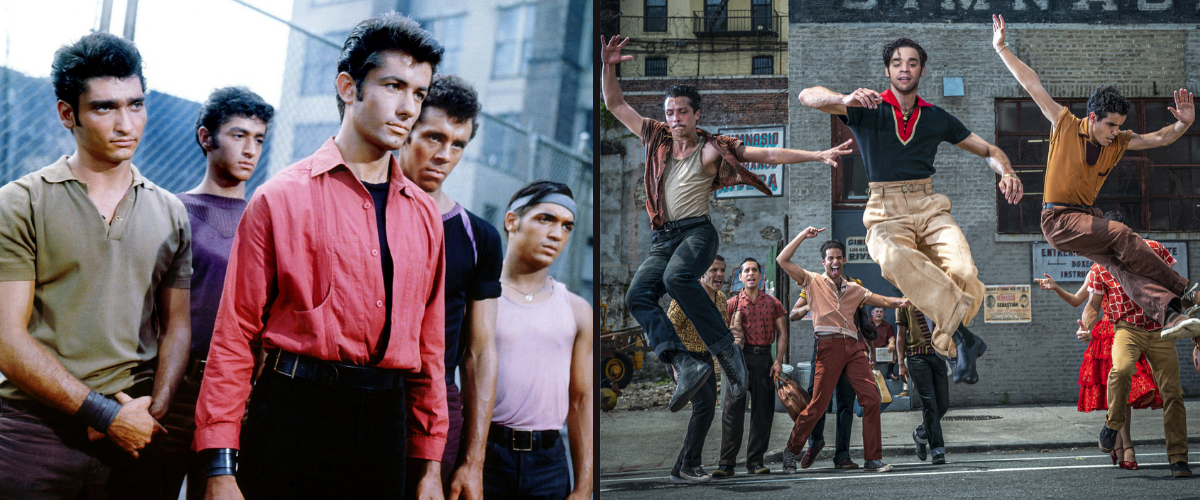
In direct contrast with the original, the 2021 version features a Latine cast as the Puerto Rican characters. There is no brownface here. I won’t gush about it because it’s the bare minimum the film could’ve done. It does have some Puerto Rican actors, but most of the cast playing Puerto Ricans should have been Puerto Rican. Not that Rachel Zegler and David Alvarez aren’t amazingly talented—they are—but they’re Colombian and Cuban respectively. The movie would have felt more authentic and respectful if more Puerto Rican cast and crew were involved. The only main cast member of Puerto Rican descent is Ariana DeBose.
Unlike the original, the 2021 West Side Story includes much more Spanish. It makes up about 40% of the dialogue. This made the movie feel so much more authentic. But it also has no subtitles. I have mixed feelings about this. I must agree with Dr. Bonilla’s argument in her review for The New York Times that not all Latines speak Spanish, so some details get lost. Spielberg claims he’s trying not to give “English the power over Spanish.” However, won’t the movie receive subtitles or dubbing even for the English in countries like Russia, France, and Germany—where it earned the most? Spielberg may be sacrificing understanding of the story for his idea of respect.
I did appreciate the way Spanish was used in the movie. The Sharks speak Spanish to the white people when they get passionate or are saying something they don’t want them to understand. And this makes the white people uncomfortable. A repeated phrase throughout the movie is “No Spanish” or something similar. This made the movie more impactful and relevant to real life, a layer the original lacked. We hear this said all the time in reality. America is a land full of immigrants. We all speak different languages. And we all deserve to be able to speak our home language—language is a part of identity. The Puerto Ricans are constantly oppressed because they speak a language that threatens the white people’s control. But the Puerto Ricans never stop speaking Spanish, using it to maintain their cultural identity and to rebel against white supremacy.
West Side Story Reviews & Film Summary
Romance
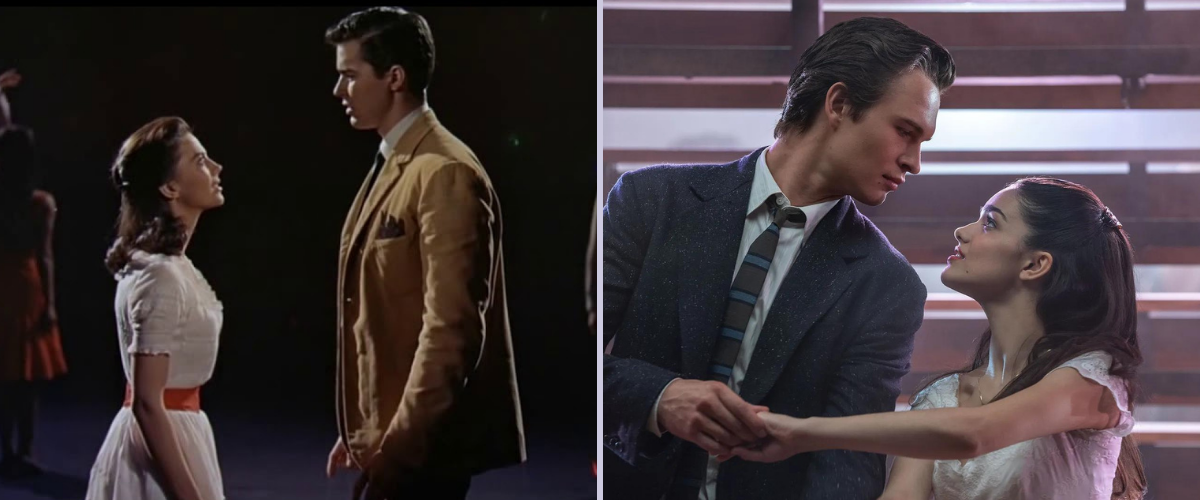
The development of the romance between the two leads is overall much better in the 2021 version than in the original. Rachel Zegler’s stellar performance compensates for Elgort’s lack of singing talent and charisma.
In the 1961 version, María and Tony’s first meeting felt contrived and artificial. They spot each other from across the room and are suddenly transported to a dark dreamscape where they dance before talking about vague notions of romance and destiny. Tony does most of the talking. Then they kiss before they’re separated. This scene did not maintain my suspension of disbelief.
The 2021 version makes their meeting much more organic. Tony and María notice each other from across the room. They walk behind the bleachers where they can dance away from the scrutiny of others. They have an actual conversation before they kiss, a conversation that’s very down to earth about dancing, height, and ethnic differences. It’s cute and awkward and funny. Then María kisses Tony, catching him off guard. I prefer this to the original version because it gives María more agency and more realistically portrays the pair’s dynamic. María’s inexperience and optimism have been established, so it makes sense that she’d kiss so quickly.
The romance moves fast after that. Tony’s relentless optimism and María’s slight reservations make their interactions compelling. They have serious discussions about each of their communities and their relationship—conversations they never had in the original. The movie makes María a bit more complex—she defends her brother’s struggles, she’s aware of Tony and Riff’s white privilege, and she knows her relationship could have harmful consequences.
In the 2021 version, the pair’s “marriage” scene is also updated. Tony has learned some Spanish to communicate the way he feels to María, which she laughs at but adores. Spanish is much more prevalent in their relationship. Tony learns it to show how much he cares about her. I liked this added detail because it makes sense. It’s what people should do for their partners who speak another language.
Bernardo and Anita
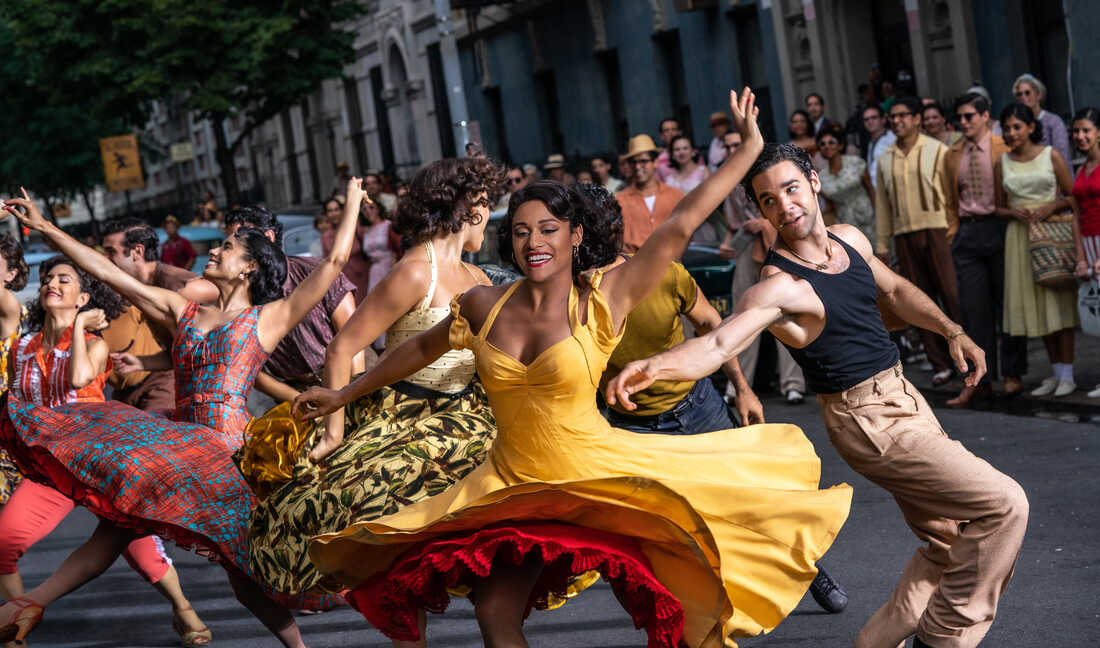
David Alvarez as Bernardo and Ariana DeBose as Anita were two highlights of this movie. Their chemistry is off the charts. The 2021 version treats these characters with more respect, emphasizing their love for each other. The pair especially shine in “America,” which conveys the ambivalence of migrating to America. It all comes full circle by the end, with Anita announcing after the assault from the Jets that she’s “Puertorriqueña.” It’s not a triumphant moment; it’s a tragic one as Anita’s hopes of thriving in America have been dashed by the brutal reality she faces. It’s depressing, but it’s true.
Chino
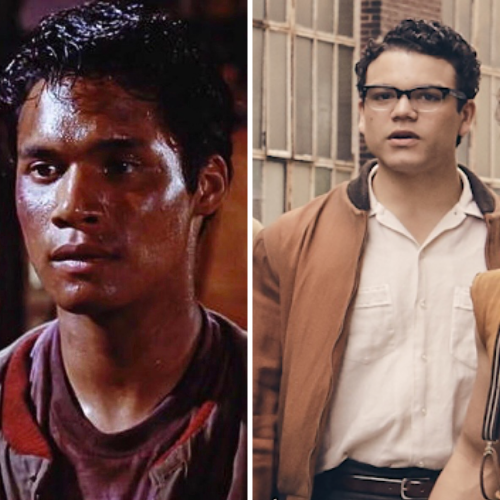
In the original, Chino is a gang member. In the 2021 version, he’s very different. He’s not a Shark, but a nervous and smart student taking night classes while working to get a mechanical job. Chino (Josh Andrés Rivera) represents a certain group not only in Latin American communities but in many underprivileged communities. He represents those who have the opportunity to “get out” by going to college and moving beyond manual labor and the working class. Bernardo doesn’t want Chino to join the gang because of the violence, but Chino joins at the rumble anyway because of his pride in his culture and longing for belonging in his community. This makes his ending all the more tragic because despite being one of the “smart” ones, he still kills Tony, then gets arrested.
Interestingly, Rita Moreno’s Valentina turns him in. She’s the new version of Doc, a white man in the original. The film transfers Doc’s function in the story to Valentina: she spends most of her time with white characters like Tony and the Jets. The story uses Valentina’s Puerto Rican identity to help Tony get closer to María. Yet, the story doesn’t involve as much of her Puerto Rican identity beyond that. She doesn’t come into contact with fellow Puerto Rican characters. She calls the Jets rapists for what they do to Anita, scolds them like they’re little boys, but then lets them go. Meanwhile, she hands over Chino for what he did to Tony. This represents the perpetual cycle of injustice in America; POC is continuously punished for their actions and worse, while white offenders face no justice. This film depicts the bitter reality of living in America as an immigrant of color. Though, I can’t help but wonder what kind of convoluted messages this sends about Latine criminals in America.
How It’s Limited by the Original
-
Hollow Puerto Ricans
-
Anybody
-
Outdated Story
Hollow Puerto Ricans
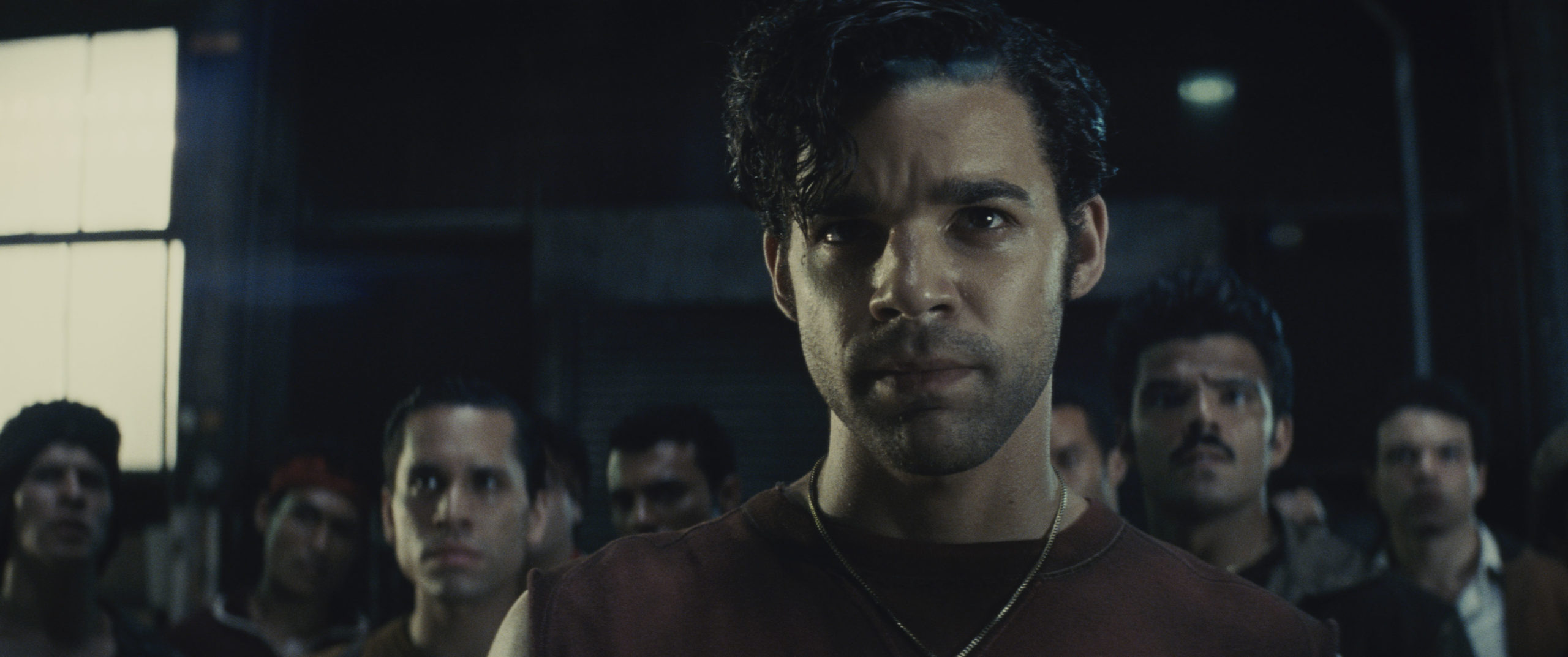
Just like the original, the Jets get more development than the Sharks. Spielberg had the opportunity to fix this in the new movie. He could’ve given the Sharks their song. But he didn’t. The Jets get their songs and scenes to showcase their familial dynamic, explain why they joined a gang, etc. The Sharks never get this development. It’s implied that the Puerto Ricans formed a gang to protect their culture, but that’s it. We never learn more about their motivations. It’s never explained why Bernardo came to America in the first place, or why Anita or María came, either. Bernardo gets an added backstory of being a boxer, but it’s a small detail thrown in with no real significance in the story. María herself doesn’t get much development beyond being in love with Tony, either. She has one throwaway line about wanting to go to college. We know little to none about María’s aspirations or what her life is like outside of Tony.
Anybody
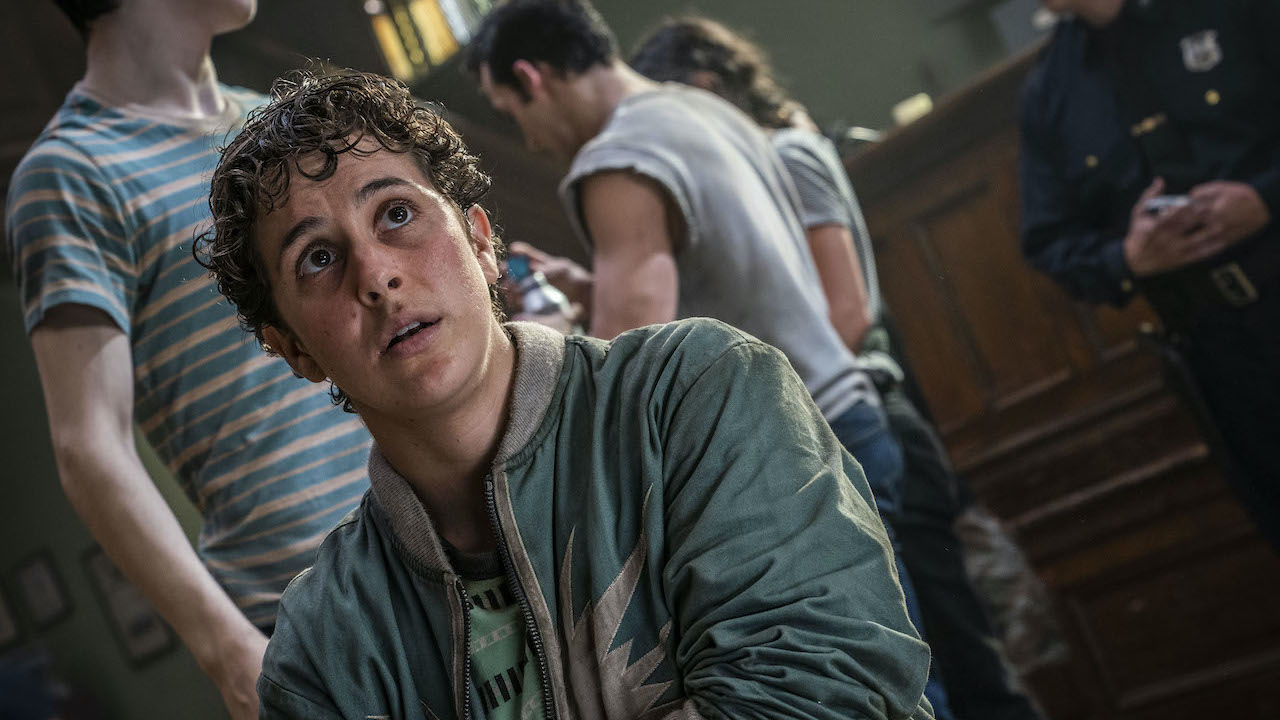
The new film changes the tomboy character of Anybodys (Iris Menas) to be transgender. This makes sense for the character. However, Anybodys’ character arc has multiple issues. He’s treated terribly by the Jets, constantly being told he’s a girl. He wins their respect when he helps them find and protect Tony, finally being recognized as a boy. Then Anita enters the store. Anybody seems to know what’s about to happen and tells her to go. But then he leaves. Immediately after, the Jets attempt to rape Anita. The scenes are uncomfortably close together. Anybodys’ need to be recognized as a male is directly tied to his need to become a Jet, but it shouldn’t be because the Jets are awful people. What is the message here? To be a boy one must look away when other boys do terrible, inhumane things? Anybody deserves more development beyond that, but that’s all he gets.
Outdated Story
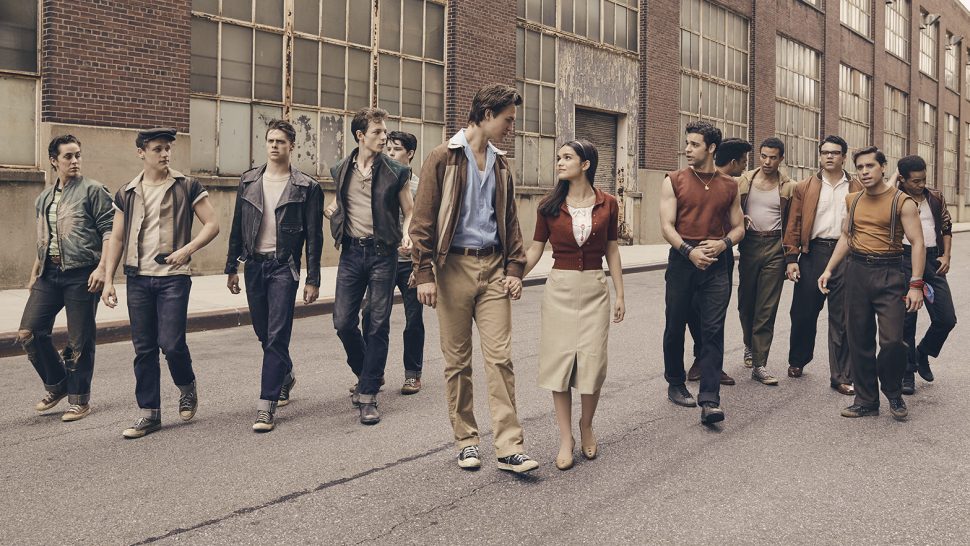
Overall, the story of West Side Story is outdated. Spielberg does some to fix it, but he doesn’t solve all of its problems. María falling so blindly in love with a white boy in the first place seems a bit unrealistic given the racism she and her family face every day. Her choice to sleep with him immediately after finding out he killed her brother will never make sense to me. The new West Side Story is limited by its predecessor, by the very story, it seeks to retell. I loved the film, but I’m not sure we needed this remake. Nobody should remake it again. West Side Story is a story of the past, and it should stay there. We can look back on it and learn from it. We should tell new stories about Puerto Ricans and Latines in America with more Puerto Ricans and Latines writing the scripts, producing, and directing these films themselves to tell their own stories.
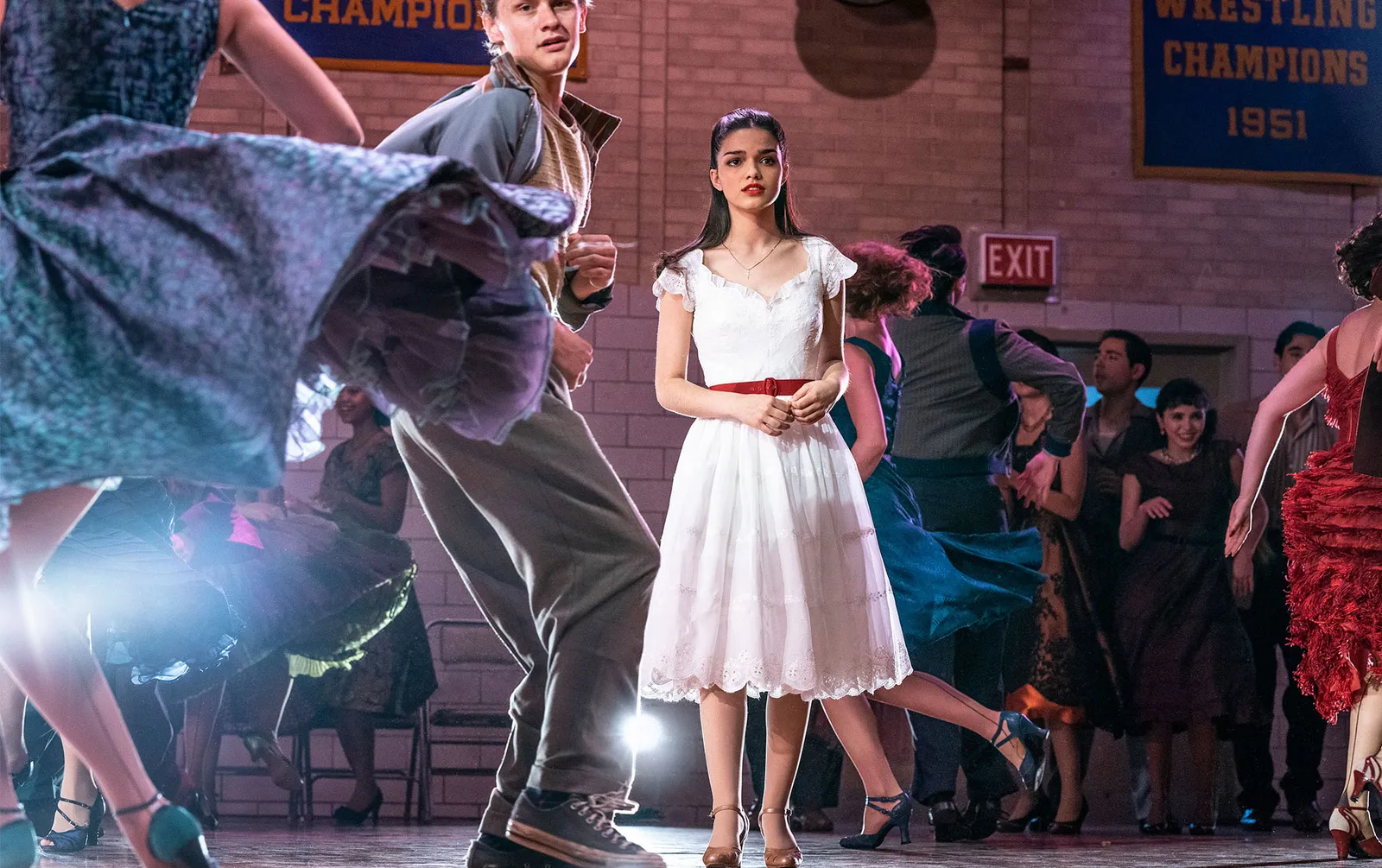
Comments